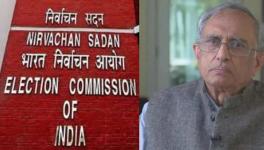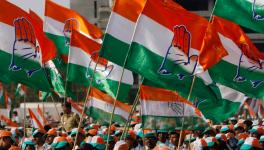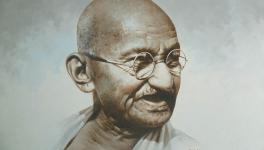Imagined Religious Communities?
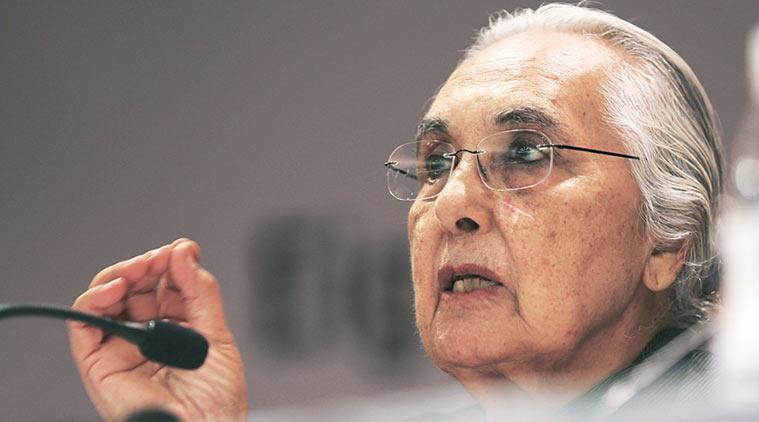
This is an excerpt from The Historian and her Craft Collected Essays and Lectures of Romila Thapar recently published by the Oxford University Press and republished here with permission. Read the first part of our continued focus on Romila Thapar's collected works here.
‘Communal’, as many in this audience are aware, in the Indian context has a specific meaning and primarily perceives Indian society as constituted of a number of religious communities. Communalism in the Indian sense therefore is a consciousness which draws on a supposed religious identity and uses this as the basis for a political and social ideology. It then demands political allegiance to a religious community and supports a programme of political action designed to further the interests of that religious community. Such an ideology is of recent origin but uses history to justify the notion that the community (as defined in recent history) and therefore the communal identity, have existed since the early past. Because the identity is linked to religion, it can lead to the redefinition of the particular religion, more so in the case of one as amorphous as Hinduism.
Such identity tends to iron out diversity and insists on conformity, for it is only through a uniform acceptance of the religion that it can best be used for political ends. The attempt is always to draw in as many people as possible since numbers enhance the power of the communal group and are crucial in a mechanical view of democracy. This political effort requires a domination over other groups and where the numbers are substantially larger, there is a deliberate emphasis both on superiority and the notion of majority, a notion which presupposes the existence of various ‘minority communities’. In the construction of what have been called ‘imagined communities’, 1 in this case identified by religion, there is an implied rejection of the applicability of other types of divisions in society, such as status or class.
In the multiplicity of communalisms prevalent in India today, the major one obviously is Hindu communalism since it involves the largest numbers and asserts itself as the dominant group. I shall therefore discuss only the notion of the Hindu community and not those of other religions. Nevertheless my comments on communal ideology and its use of history would apply to other groups claiming a similar ideology. I would like to look at those constituents of Hindu communal ideology which claim legitimacy from the past, namely, that there has always been a well-defined and historically evolved religion which we now call Hinduism and an equally clearly defined Hindu community. Implicit in this are the historical implications of Hindu communalism and I shall argue that it is in part a modern search for an imagined Hindu identity from the past, a search which has drawn on the historiography of the last two centuries. The historical justification is far from being the sole reason for the growth of communalism, but recourse to this justification fosters the communal ideology.
The modern description of Hinduism has been largely that of a brāhmaṇa -dominated religion which gathered to itself in a somewhat paternalistic pattern a variety of sects drawing on a range of Buddhists, Jainas, Vaiṣṇavas, Śaivas and Śāktas. The texts and the tradition were viewed as inspirational, initially orally preserved, with multiple manifestations of deities, priests but no church, a plurality of doctrines with a seeming absence of controversies and all this somehow integrated into a single religious fabric. Differences with the Semitic religions were recognized and were seen as the absence of a prophet, of a single revealed book regarded as sacred, of a monotheistic God, of ecclesiastical organization, of theological debates on orthodoxy and heresy and, even more important, the absence of conversion. But somehow the logic of these differences was not built into the construction of the history of the religion. Hinduism was projected largely in terms of its philosophical ideas, iconology and rituals. It is ironic in some ways that these multiple religious sects were seldom viewed in their social and historical context even though this was crucial to their understanding. Histories of the ‘Hindu’ religion have been largely limited to placing texts and ideas in a chronological perspective with few attempts at relating these to the social history of the time. Scholarship also tended to ignore the significance of the popular manifestation of religion in contrast to the textual, a neglect which was remedied by some anthropological research, although frequently the textual imprint is more visible even in such studies.
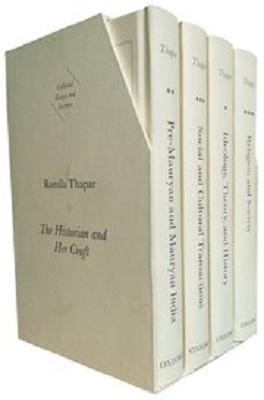
The picture which emerges of the indigenous view of religion from historical sources of the early period is rather different. The prevalent religious groups referred to are two, Brahmanism and Shramanism with a clear distinction between them. They are organizationally separate, had different sets of beliefs and rituals and often disagreed on social norms. That this distinction was recognized is evident from the edicts of the Mauryan king Aśoka 2 as well as by those who visited India and left accounts of what they had observed, as, for example, Megasthenes; 3 the Chinese Buddhist pilgrims Faxian and Xuanzang; 4 and Alberuni. 5 The Buddhist visitors write mainly of matters pertaining to Buddhism and refer to the brāhmaṇas as heretics. Patañjali the grammarian refers to the hostility between Brahmanism and Shramanism as innate as is that between the snake and the mongoose. 6 Sometimes the brāhmaṇas and the śramaṇas are addressed jointly as in Buddhist texts and the Aśokan edicts. Here they are being projected as a category distinct from the common people. Such a bunching together relates to a similarity of concerns suggestive of a common framework of discourse but does not detract from the fundamental differences between the two systems. It might in fact be a worthwhile exercise to reconstruct Brahmanism from the references to it in Shramanic and other non-Brahmanical sources.
A historical view of early Indian religion would endorse this dichotomy and its continuity even in changed forms. Early Brahmanism demarcates the twice-born upper castes from the rest. The twice-born has to observe the precepts of śruti —the Vedas and of smṛti —the auxiliary texts to the Vedas and particularly the Dharmaśāstras. Dharma lay in conforming to the separate social observances and ritual functions of each caste. The actual nature of belief in deity was left ambiguous and monotheism was not a requirement. The focus of worship was the sacrifi cial ritual. Brahmanism came closest to having a subcontinental identity largely through its ritual functions and the use of a common language, Sanskrit, even though it was prevalent among only a smaller section of people.
Shramanism, a term covering a variety of Buddhist, Jaina, Ājīvika and other sects, denied the fundamentals of Brahmanism such as Vedic śruti and smṛti. It was also opposed to the sacrifi cial ritual both on account of the beliefs incorporated in the ritual as well the violence involved in the killing of animals. It was characterized by a doctrine open to all castes and although social hierarchy was accepted it did not emphasize separate social observances but, rather, cut across caste. The idea of conversion was therefore notionally present. The attitude to social hierarchy in most Shramanic sects was not one of radical opposition. In Buddhism, for example, recruitment to the saṅgha and support from lay followers was initially in large numbers from the upper castes and the appeal was frequently also made to such groups. 7 Nevertheless there were no restrictions on a lower caste recruitment and in later periods support from such groups was substantial. The founders of the Shramanic sects were not incarnations of deity. Buddhism and Jainism had an ecclesiastical organization, the saṅgha, and in most cases there was an overall concern with historicity.
In terms of numbers there appears to have developed even greater support for the Śākta sects which were in many ways antithetical to early Brahmanism. The essentials of Shaktism are sometimes traced back to Harappan times and some of these elements probably went into the making of popular religion from the earliest historical period. Recognized sects gradually crystallized from the first millennium ad when they come to be referred to in the literature of the period. The centrality of worshipping the goddess was initially new to upper caste religion. Some of these sects deliberately broke the essential taboos of Brahmanism relating to separate caste functions, commensality, rules of food and drink and sexual taboos. 8 That some of the beliefs of the Śākta sects were later accepted by some brāhmaṇa sects is an indication of a break with Vedic religion by these brāhmaṇa sects although the legitimacy of the Vedic religion was sometimes sought to be bestowed on the new sects by them. Such religious compromises were not unconnected with the brahmanical need to retain social ascendency. However, some brahmanical sects remained orthodox.
As legitimizers of political authority, the brāhmaṇas in the first millennium ad were given grants of land which enabled them to become major landowners. The institutions which emerged out of these grants such as the agrahāras became centres of control over rural resources as well as of Brahmanical learning and practice. It was probably this high social and economic status of the brāhmaṇa castes which encouraged the modern idea that Brahmanism and Hinduism were synonymous. But that Brahmanism had also to compromise with local cults is evident from the religious articulation of text and temple and from the frequency with which attempts were introduced into Brahmanism to purify the religion in terms of going back to śruti and smṛti. In the process of acculturation between brahmanic ‘high culture’ and the ‘low culture’ of local cults, the perspective is generally limited to that of the Sanskritization of the latter. It might be historically more accurate on occasion to view it as the reverse, as, for example, in the cult of Viṭṭhala at Pandharpur or that of Jagannātha at Puri. 9 In such cases the deities of tribals and low caste groups become, for reasons other than the purely religious, centrally significant and Brahmanism has to adapt itself to the concept of such deities. The domain of such deities evolves out of a span spreading horizontally, moving from a village to its networks of exchange and finally encompassing a region. The focal centre of such a cult takes on a political dimension as well in the nature of the control which it exercises, quite apart from ritual and belief. Pilgrimage then becomes a link across various circumferences. The increasing success of Brahmanism by the end of the first millennium ad resulted in the gradual displacement of Shramanism—but not entirely. Local cults associated with new social groups led to the emergence of the more popular Puranic religion. Vedic deities were subordinated or set aside. Viṣṇu and Śiva came to be worshipped as the pre-eminent deities. The thrust of Puranic religion was in its assimilative and accommodating processes. A multitude of new cults, sects and castes were worked into the social and religious hierarchy. Religious observance often coincided with caste identities.
By the early second millennium ad a variety of devotional cults— referred to by the generic label bhakti —had come to form a major new religious expression. They drew on the Puranic tradition of Śaivism and Vaiṣṇavism but were also in varying degrees the inheritors of the Shramanic religions. Their emphasis on complete loyalty to the deity has been seen as a parallel to feudal loyalties. But what was more signifi cant was that bhakti cults and the sects which grew around them sought to underline dependence on and liberation from rebirth through the deity. To this extent they indicate a departure from earlier indigenous religion. These cults were god-centred rather than man-centred. The ritual of sacrifice had been substituted by the worship of an icon. Some sects accepted, up to a point, Brahmanical śruti and smṛti whereas others vehemently denied it, a debate which continues to this day. Those sects in opposition to Brahmanism which sought to transcend caste and differentiated social observances, insisting that every worshipper was equal in the eyes of the deity, often ended up as castes, thus once again coinciding sect with caste. With the arrival of Islam in India some drew from the ideas of Islam. Most of these sects were geographically limited and bound by the barriers of language. Possibly the beginnings of larger religious communities within what is now called the Hindu tradition, date to the middle of the second millennium, such as perhaps some Vaiṣṇava sects, where, for example, the worship of Kṛṣṇa at Mathura drew audiences from a larger geographical region than before. This also heralds a change in the nature of Puranic religion, for Mathura attracts Vaiṣṇavas from eastern and southern India and becomes like Ayodhya (for the worship of Rāma 10) the focus of a search for sacred topography. It might perhaps be seen as an attempt to go beyond local caste and sect and build a broader community. The historical reasons for its happening at this juncture need to be explored. Initial opposition from those of high caste status also encouraged bhakti sects to inculcate a sense of community within themselves, particularly if they were economically successful, such as the Vīraśaivas. Even when such religious sects attempted to constitute a larger community, the limitations of location, caste and language, acted as a deterrent to a single, homogeneous Hindu community. In the continuing processes of either appropriation or rejection of belief and practice, the kaleidoscopic change in the constitution of religious sects was one which precluded the emergence of a uniform, monolithic religion.
The multiplicity of cults and sects also reflects a multiplicity of beliefs. Even in Brahmanism we are told that if two śruti traditions are in conflict then both are to be held as law. 11 This is a fundamentally different approach from that of religions which would like to insist on a single interpretation arising out of a given theological framework. This flexibility together with the emphasis on social observance rather than theology allowed of a greater privatization of religion than was possible in most other religions. Renunciatory tendencies were common, were respected and often gave sanction to private forms of worship. The renouncer opted out of society, yet was highly respected. 12 The private domain of belief was always a permissible area of early Indian religion: a religion which is perhaps better seen as primarily the religious belief of social segments, sometimes having to agglomerate and sometimes remaining sharply differentiated. The coexistence of religious sects should not be mistaken for the absorption of all sects into an ultimately unified entity. But the demarcation was often more significant since it related both to differences in religious belief and practice as well as social status and political needs. The status of a sect could change as it was hinged to that of its patrons. Political legitimation through the use of religious groups was recognized, but the appeal was to a particular sect or cult or a range of these and not to a monolithic religion. Royal patronage within the same ruling family, extended to a multiplicity of sects, was probably conditioned as much by the exigencies of political and social requirements as by a religious catholicity. This social dimension as well as the degree to which a religious sect had its identity in caste or alternatively was inclusive of caste, has been largely ignored in the modern interpretation of early Hinduism. With the erosion of social observances and caste identity, there is now a search for a new identity and here the creation of a new Hinduism becomes relevant.
The evolution of Hinduism is not a linear progression from a founder through an organizational system, with sects branching off. It is rather the mosaic of distinct cults, deities, sects and ideas and the adjusting, juxtaposing or distancing of these to existing ones, the placement drawing not only on belief and ideas but also on the socioeconomic reality. New deities could be created linked genealogically to the established ones, as in the recent case of Santoshi Ma, new rituals worked out and the new sect could become the legitimizer of a new caste. Religious practice and belief are often self-sufficient within the boundaries of a caste and are frequently determined by the needs of a caste. The worship of icons was unthought of in the Vedic religion, but the idol becomes a significant feature of Puranic religion and therefore also in the eyes of contemporary Muslim observers. The consciousness of a similarity in ritual and belief in different geographical regions was not always evident. Thus bhakti cults were confined to particular regions and were frequently unaware of their precursors or contemporaries elsewhere. Recourse to historicity of founder and practice was confi ned within the sect and was not required of a conglomeration of sects which later came to be called Hinduism. This is in part refl ected in the use of the term sampradāya for a sect where the emphasis is on transmission of traditional belief and usage through a line of teachers. The insistence on proving the historicity of human incarnations of deity, such as Rāma and Kṛṣṇa, is a more recent phenomenon and it may be suggested that there is a subconscious parallel with the prophet and the messiah. The identifi cation of the janmabhūmis , the location of the exact place where Kṛṣṇa and Rāma were born, becomes important only by the mid-second millennium ad.
Religions such as Buddhism, Jainism, Islam and Christianity, see themselves as part of the historical process of the unfolding and interpreting of the single religion and sects are based on variant interpretations of the original teaching. They build their strength on a structure of ecclesiastical organization. In contrast to this, Hindu sects often had a distinct and independent origin. Assimilation was possible and was sometimes expressed in the appropriation of existing civilizational symbols. What needs to be investigated is the degree to which such civilizational symbols were originally religious in connotation.
Civilizational symbols are manifested in many ways: from the symbol of the svāstika to the symbol of the renouncer as the noblest and most respected expression of human aspirations. The history of the svāstika goes back to the fourth millennium bc where a design which resembles it occurs on seals and impressions from northwest India and Central Asia. In the Indian subcontinent it is not a specifi cally Hindu symbol for it is used by a variety of religious groups in various ways, but in every case it embodies the auspicious. The Bon-po of the Himalayan borderlands reverse the symbol to distance themselves from the Buddhists. The two epics, the Mahābhārata and the Rāmāyaṇa , frequently treated as primarily the religious literature of the Vaiṣṇavas, are in origin as epics, civilizational symbols. They were, at one level, the carriers of ethical traditions and were used again by a variety of religious sects to propagate their own particular ethic, a situation which is evident from the diverse treatment of the theme of the Rāmāyaṇa in Vālmīki, in the Buddhist Vessantara and Dasaratha Jātakas and in the Jaina version—the Paumacariyam of Vimalasūri The epic versions were also used for purposes of political legitimation. The primarily Vaiṣṇava religious function of the epics develops gradually and comes to fruition in the second millennium ad with clearly defi ned sects worshipping Rāma or Kṛṣṇa coinciding with the development of what has been called the Puranic religion. Subsequent to this were various tribal adaptations of the Rāmāyaṇa , and these were less concerned with the Vaiṣṇava message and more with articulating their own social fears and aspirations.
Disclaimer: The views expressed here are the author's personal views, and do not necessarily represent the views of Newsclick.
Get the latest reports & analysis with people's perspective on Protests, movements & deep analytical videos, discussions of the current affairs in your Telegram app. Subscribe to NewsClick's Telegram channel & get Real-Time updates on stories, as they get published on our website.














